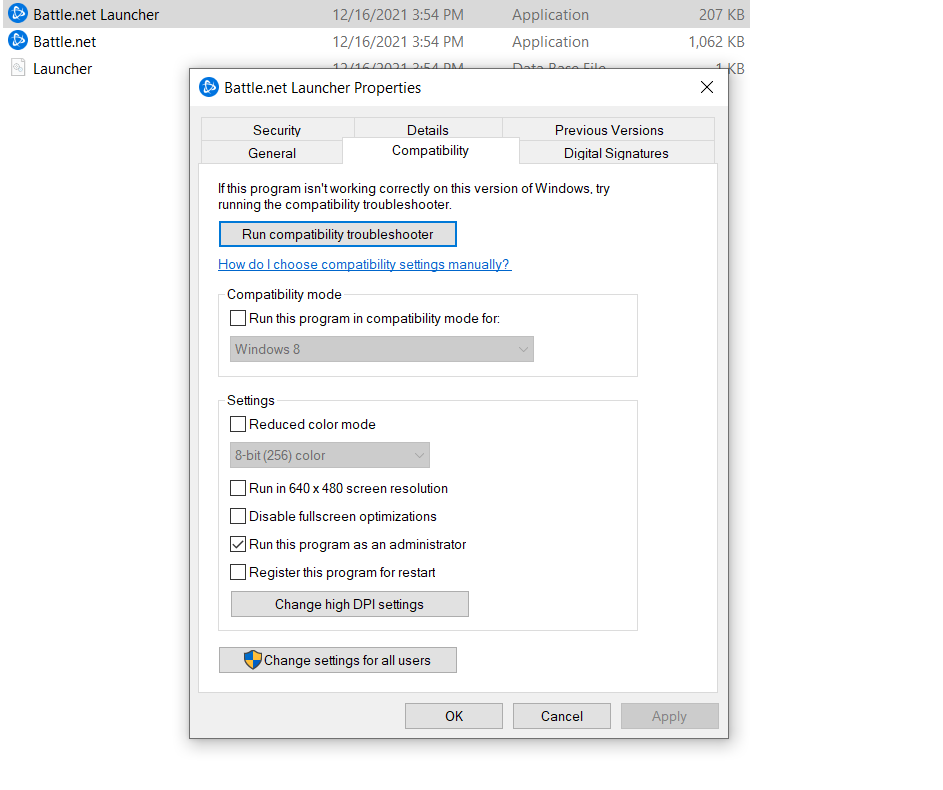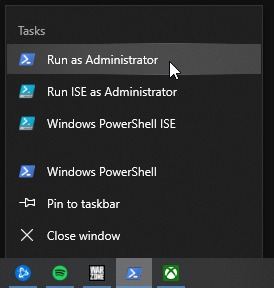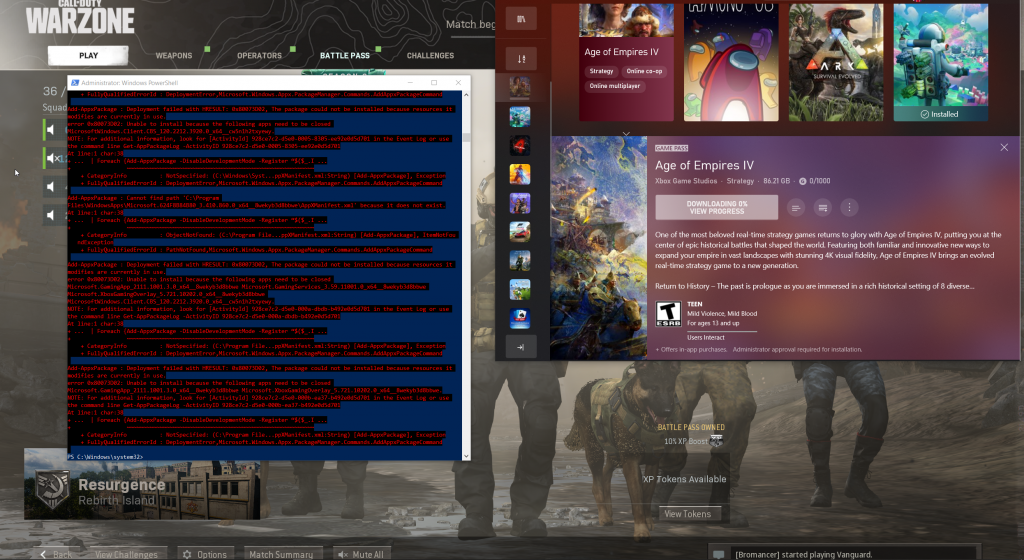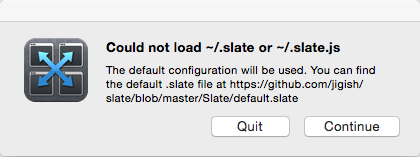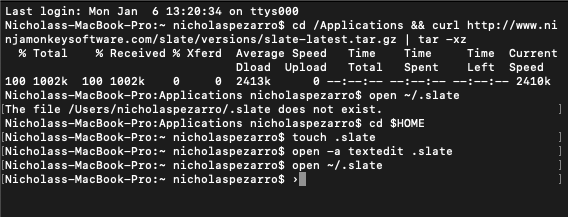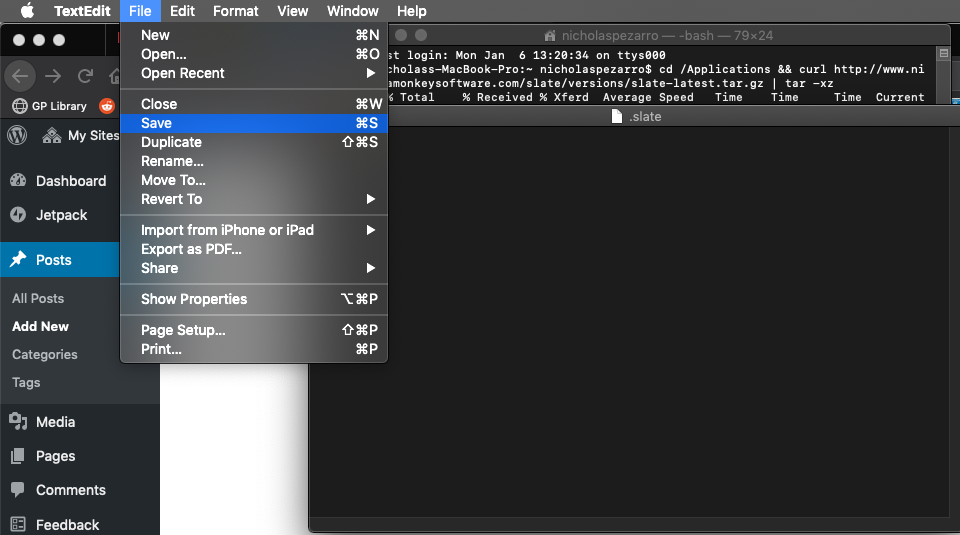Where should you put your money after expenses?
So you’ve got some money left over after paying for your expenses. Congratulations! Now you should start thinking about what you’re going to do with that money. Thankfully, the process is fairly simple and it’s mostly just a waterfall approach. My advice would be to roughly follow this order:
- Pay off high interest debt (credit card, some types of loans)
- Build an emergency fund
- Put money into tax advantaged savings
- Pay off low interest debt (depending on your preferences and whether it brings you emotional relief)
Pay off high interest debt
Paying off high interest debt seems fairly obvious given that it is probably causing you a ton of stress and is actively draining the money that you’re earning on a regular basis. Another bonus of paying off high interest debt is that you’re effectively getting a guaranteed return of whatever rate of interest you’re paying on that debt. There are essentially two ways to go about paying off your high interest debt.
- Highest to lowest prioritization (HLP)
- Snowball approach
HLP involves paying off your debts in order of whichever debt has the highest rate of interest. The snowball approach is where you tackle your debt in the order of total dollar value of the debt.
HLP is more financially efficient as you’ll be taking the most efficient path towards reducing the amount of money you’re paying (or debt you’re amassing) by hitting the highest rate debts first. The snowball approach is generally less efficient because you won’t necessarily be tackling your highest rate debts first but it can be better for a few reasons:
- You find it motivating to settle individual debts and thus continue with the process of paying off debt more consistently than you would have otherwise
- There are debt servicing costs aside from a strict interest rate (for example a flat fee per period + the debt rate %) that make the effective interest rate for that debt higher.
- Hitting your smaller debts first gets your count of outstanding debts down and allows you to better manage payments and compliance (thus making you less likely to get hit with late fees, minimum payment fees, etc).
Build an emergency fund
The concept of an emergency fund is to have a decent chunk of money on hand to be able to handle unexpected expenses that come up and avoid you falling into debt or being forced to make suboptimal decisions (like taking a high interest short term loan or accepting a job that will put you in a tough position).
The basics of setting up an emergency fund are:
- Collect enough cash on hand to pay expenses for several months
- Keep your emergency fund in an account where it is liquid (immediately accessible) and won’t fluctuate in value
Collect enough cash on hand to pay expenses for several months
Returning to the concept of your appetite for risk we’ll be using that again to determine how many months of expenses you should be holding onto in your emergency fund. I’m moderately risk averse so I choose to hold about 6 months of expenses in my emergency fund. The 6 – 12 month range is generally what the recommendation is with regards to holding funds in an emergency fund.
If you have relatively low expenses or are able to quickly reduce them you may want to consider holding fewer months worth of expenses in your emergency fund. On the other hand, if you have high expenses or others relying on you (your family, your parents, your partner) you want to hold more cash in your emergency fund (up to 12 months).
Another thing to consider with regard to how many months of expenses to keep is the emotional benefit of having a certain number of months of money on hand for expenses and the peace of mind that comes with it. If you get nervous only having 6 months of expenses on hand then it may be worth it for you to hold 9 or 12 months worth just for peace of mind.
The last thing you’ll want to consider is that you won’t want to go too far over a reasonable amount of cash to hold because the cash that you’ll be holding in your emergency fund won’t be earning the same returns that your investments will be and may lose value as a result of inflation over time.
Keep your emergency fund in a place where it is liquid and won’t fluctuate in value
This is a very important part of setting up a successful emergency fund. You need your fund to be accessible so that you can quickly pull out money to settle large expenses that may come up. Not putting it in something where its value won’t fluctuate is also important because you want to be able to count on having a reliable source of cash if the need does come up.
I would recommend finding a bank with a high yield savings account that you can place these funds in. Currently, there are many options where your cash will be earning over 2% per year but still be immediately accessible (there are some good options here – https://www.doctorofcredit.com/high-interest-savings-to-get/). Choose an account that suits your needs and build up your emergency fund there. I chose Ally Bank as its the right balance of a decent rate, few fees & good online banking features.
Put money into tax advantaged savings
Tax advantaged savings are things like your IRA, HSA and 401k (more types of accounts exist but they are more niche. See a list here – https://en.wikipedia.org/wiki/Category:Tax-advantaged_savings_plans_in_the_United_States). You’ll want to prioritize putting money into these for a number of reasons:
- You’ll lose your annual contribution room (for folks in the US, other countries have more intelligent systems that allow you to use room from prior years) for the various accounts if you don’t fund them within the year.
- These accounts are like amplifiers for your savings because they give you value immediately (in the form of reduced taxable income or tax free growth)
- Some tax advantaged savings will have a % of contributions matched by your employer (depends on your employer).
You’ll lose your contribution room
All of the tax advantaged savings in the US are set up on a calendar year basis. So you’ll get a new chunk of contribution room once a new year begins. If we take a 401k for example, you have $18,500 (more room is available through a Roth Mega Backdoor but that is a whole other topic – https://www.madfientist.com/after-tax-contributions/) in contributions that you can make over the course of a given year. So, if you’ve made $17,000 in contributions by the end of 2019 you’ll immediately have another $18,500 of room to make contributions once you hit January 1st, 2020.
It’s important to be mindful of the tax advantaged accounts that you have access to, your available contribution room and how much you’ve contributed to date to gain the most that you can from them on an annual basis.
Common tax advantaged accounts, limits and contribution methods
- IRA (Traditional and Roth – https://www.irs.gov/retirement-plans/traditional-and-roth-iras)
- Annual limit
- $6,000 (changes occasionally based on cost of living adjustments)
- Contribution methods
- Set up an IRA with a bank or investment firm and contribute to it whenever you like
- Contribution window
- For a given tax year, contribute to your 201x IRA by April 15, 201x+1. For example, for the 2019 tax year contribute by April 15, 2020.
- Available providers
- Given that you’re the one setting up your IRA and you have complete control, you’ll be able to go with whichever provider you desire. I recommend Vanguard for their low cost index funds and company structure.
- Requirements
- No requirements other than you need to open the account yourself.
- 401k (Traditional and Roth – https://www.irs.gov/retirement-plans/plan-participant-employee/retirement-topics-401k-and-profit-sharing-plan-contribution-limits)
- Annual limit
- $19,000 (changes occasionally based on cost of living adjustments) in contributions that you can make directly yourself. Up to $56,000 in contributions between you and your employer can be made. See info on the Mega Backdoor Roth (https://www.madfientist.com/after-tax-contributions/) and Solo 401Ks (https://www.reddit.com/r/financialindependence/comments/984lax/for_firehopeful_sidefreelancer_whats_best/) to better understand how you might be able to take advantage of this extra contribution room.
- Contribution methods
- You can only put money that you’re earning through your paycheck with an employer into your 401k. You do this by choosing your contribution amount (either as a % or dollar amount) on a per paycheck basis.
- You can max out your 401K earlier in the year if you like. Generally I would advise to spread out your contributions roughly evenly over the course of the year but the flexibility is nice (if you’re planning to quit before the end of the year and you have a good match, for example).
- Contribution window
- Given that you can only contribute with dollars earned on your paycheque you’re naturally limited to money earned over the course of a given tax year with your employer(s).
- Available providers
- The 401k provider you’ll be using will be determined by your employer. If you are setting up your own 401k you’ll be able to choose yourself (I recommend Vanguard).
- Requirements
- Employer must have a 401k plan set up that you can contribute to.
- HSA (https://www.shrm.org/resourcesandtools/hr-topics/benefits/pages/2019-hsa-contribution-limits-rise-irs-says.aspx)
- Annual limit
- $3500 self only
- $7000 family
- Contribution methods
- Similar to the 401k, you can contribute to your HSA through your paycheque. You can choose a % of dollar amount contribution.
- One big difference, however, is that you cannot contribute more earlier in the year to max out before the end of the year. Your contributions are bound in a way where you can only max out by the end of the year. This means that for a self only HSA you can contribute a max of 145.83 per paycheque (assuming you get paid twice per month).
- You can also contribute directly to your HSA but it depends on the terms of your account (usually dictated by your employer). Find out more here (https://finance.zacks.com/contribute-pretax-dollars-hsa-1762.html).
- Contribution window
- Same as for an IRA. For a given tax year, contribute to your 201x HSA by April 15, 201x+1. For example, for the 2019 tax year contribute by April 15, 2020.
- Available providers
- The range of providers that you’ll be able to choose from depends on your employer. For example, with my employer, I must use HSA Bank for my HSA.
- Requirements
- Being able to contribute to an HSA has requirements in terms of the health insurance that you’re using (requirements listed here are for self only plans):
- Your minimum deductible must be $1,350 or higher
- Your out of pocket max must be lower than $6,750
There are more plans which I may cover in the future but these are the most common ones that you should be aware of.
One important note is to be aware of the fees and choices within accounts that are chosen for you by your employer. Some 401ks, HSAs and other accounts where you can’t choose your provider may have pretty bad arrangements (poor funds to choose from, high fees, etc) that make them less desirable to put money into. You should do a rough comparison vs. your other options before choosing to put money into them and move your money to a better place as soon as you have the opportunity.
For example, if you have the choice of a 401k where the lowest fee index fund for the domestic stock market is 2% and an equivalent fund at Vanguard charges you 0.01% you’ll want to consider the cost of that 1.99% fee difference vs. the benefit you’ll get from putting your money into that form of tax advantaged savings.
These plans are amplifiers for your savings
Generally tax advantaged savings offer one of two features
- They reduce your tax liability for a given year (usually labelled as Traditional)
- They allow money placed into them to grow tax free (usually labelled as Roth)
Because of this aspect of your tax advantaged savings, every dollar you put into them has a larger impact than simply putting money aside into, what is termed, taxable investments.
Some quick examples for the purpose of illustration are:
On the Traditional (tax liability reduction) front
If you were to make the full $6000 contribution to your Traditional IRA for the 2019 tax year you’d be able to reduce your Adjusted Gross Income (the amount of money you made in the year that you’re ultimately taxed on – https://www.irs.gov/e-file-providers/definition-of-adjusted-gross-income) by those $6000 dollars. This means that the taxes you’ll owe for that year will be reduced by the deduction you’re making ($6000) times your marginal tax rate (the rate you’re paying for the bracket you’re in. See tax brackets here – https://www.nerdwallet.com/blog/taxes/federal-income-tax-brackets/). So for someone who has an AGI of $100,000 they would be paying a marginal rate of 24% on their income to the federal government. By contributing $6000 to a traditional IRA they’ll be saving $1440 on their tax bill for that year.
However, when you do eventually withdraw money from your Traditional IRAs all of it will be considered income for that given year and be added directly to your AGI (https://www.investopedia.com/articles/personal-finance/021015/how-much-are-taxes-ira-withdrawal.asp).
Finally, be mindful that Traditional contributions have restrictions on when you can access them. Essentially there are penalties if you withdraw from them before you reach the age of 59.5 (there are also some special cases you can read about here – https://www.nerdwallet.com/blog/investing/ira-distribution-rules/ | https://www.thebalance.com/how-to-withdraw-money-from-a-401-k-or-ira-2894212). So, if you might need the money that you’re putting into a Traditional tax advantaged savings you may want to consider going with a Roth contribution or building up your savings funds first before putting money into Traditional tax advantaged savings.
On the Roth (tax free growth) front
Taking up the example of a full $6000 contribution to your IRA for the 2019 tax year but this time making that contribution to a Roth IRA it would look something like this. Because a Roth contribution doesn’t have an immediate impact on your taxation for the year it’s a bit more difficult to calculate.
However, we can consider a scenario where the $6000 you put into your Roth IRA has grown to $45,000 by the time you’re ready to withdraw from it. Because you put this money into a Roth IRA, you get to withdraw it without any taxation. In a scenario where you have a marginal rate of 24% and you’re withdrawing $10,000 you’d be saving $2,400 in taxes that you would have otherwise had to pay for that given year.
The more tax you expect to be paying in the future and the more you expect your Roth tax advantaged savings to grow before you pull from them the more that you’ll be interested in putting your money into this savings vehicle.
Roth contributions also have the upside of being less restrictive than Traditional contributions which can involve penalties for early withdrawals (i.e. withdrawals before retirement age). As long as you’re pulling out your contributions (what you put in earlier on an annual basis) and not your earnings you can withdraw tax free. However, if you do withdraw early, you won’t be able to put that money back in and allow it to continue to grow tax free (see here for more information Roth – https://www.nerdwallet.com/blog/investing/roth-ira-withdrawal-rules/ )
What kind of tax advantaged savings should I choose?
Generally, the guidance that people will give you is to choose Roth contributions if you think you’ll be making more money in the future and to choose Traditional contributions if you believe you’re approaching your peak earnings.
I choose to maximize a Traditional contributions where I can because I put value into having my tax burden being reduced immediately for the given year. Because of my income, I’m not eligible for Traditional IRA contributions but can contribute to a Roth IRA by using the Backdoor Roth method (https://www.physicianonfire.com/backdoor/) . So in my scenario I am maximizing the contributions available to me on the IRA and 401k front in this fashion (this example is for the 2019 year):
- 401k – $19,000 in traditional 401k contributions (+ whatever my employer will match)
- IRA – $6,000 in Roth contributions (made with the backdoor Roth contribution method)
Which puts me at 76% Traditional and 24% Roth contributions on an annual basis. You could model out what approach would be best for you by considering what your tax burden (AGI based * your tax rates based on your expected income for a given year) reduction from contributing to Traditional sources would be vs. the taxes you’d expect to save from the tax free growth of your Roth contributions (based off of how much you’ll be contributing, the rate at which your investments grow and what your tax rates will be in the future).
I may undergo that exercise myself at some point as well. But, for the time being, just putting money into tax advantaged savings is a huge step forward so don’t get too caught up in Trad vs. Roth contributions.
Contribution matching
One thing you’ll want to consider when deciding where to put your money is whether or not your contributions are being matched by your employer. Some employers will match money that you put into your 401k or HSA accounts (most common cases). In those scenarios, you’ll almost certainly want to favour putting money into those accounts to max out your available match (as it is guaranteed growth for the money that you’re putting aside) and then follow whatever order makes sense once your available match has been maxed out.
An example of a matching system is where your employer matches 100% of your 401k contributions up to 4% of your salary. So, if you have a salary of $100,000 your employer would match the first $4,000 (100,000 x 0.04) at 100%. This would leave you with $8,000 in your 401k for that given year with you only having put $4,000 of your money into it.
Occasionally, you may not want to pursue contribution matches as a priority if the terms or circumstances surrounding them are not particularly favourable. For example, some companies offer matching for your 401k but make you wait 2 years for it to vest. In that case, you may still want to prioritize your 401k but there could be scenarios where you aren’t planning to stay the full 2 years for the vest and it doesn’t make sense to you any longer.
Additionally, you may get matching for your 401k or HSA but there could be monthly fees or high expense ratios for the funds that you are able to invest into that make it so you’re better off pursuing other options available to you first.
Put your money into your chosen investment mix with taxable investments
Investments and investment choices are covered in great detail under the “How to make your investment choices post”. Essentially, once you’ve got a sense of how much money you’re saving per month in excess of your expenses and you’ve worked through the previous 3 steps (pay off high interest debt, fill up emergency fund, max out tax advantaged savings) you’ll want to start putting that extra money into your investments.
I’ve set up my investing to put money into the funds at Vanguard that I’ve selected once every two weeks. That way I’m continually adding to my investments at a regular contribution amount that works for me and I don’t have to think about it.
Pay off low interest debt
This one is interesting because carrying low interest debt isn’t necessarily a bad thing but it can make sense to pay it off before putting money into investments depending on your circumstances. For example if you have a mortgage, car loan or student loans you might find some reassurance from having those debts paid off before pushing the majority of your money into investments.
I would generally classify anything near the rates that you’re getting in a high yield savings account (currently ~2-2.5%) as low interest debt.
You’ll want to consider a few things before choosing to put money into your low interest debts:
- How does carrying this low interest debt make me feel?
- Are there any fees or disadvantages with overpaying or fully paying off your debt early?
- What are the consequences of not paying this debt for an extended period of time?
- How do my alternatives compare?
How does carrying this low interest debt make me feel?
To me, this is the most important question to ask yourself. Does having low interest debt to my name stress you out? Does it make you unhappy? Depending on the answers to those questions you may want to seriously considering just paying it off. Of course, it’ll be a question of feasibility but you can include this course of action in your financial plans to make progress on it.
For example, you might have $40,000 in student loans that have an interest rate of 2%. In terms of debt that’s a fairly low interest rate and the payments would be manageable but it might just irk you that this debt exists and you’re beholden to it. Given that paying off $40,000 could be something that someone could achieve in a reasonable time frame you could then target those loans with increased payments with the goal of having them paid off in 3 years rather than 10 (or whatever the horizon happens to be).
However, do know that you’ll likely be getting a worse return on paying off your low interest debt aggressively (at a rate exceeding what you need to pay to avoid extra fees & costs) vs. the other alternatives available to you so you should mostly only consider this when you’ve reached the point where you are putting money in taxable investments. At that point, there’ll be a tradeoff in terms of the returns you’re getting (likely lower returns as compared to taxable investments) but the peace of mind and financial security may make it worth it for you.
Are there any fees or disadvantages with overpaying or fully paying off your debt early?
Let’s say you have some low interest debt that you’d like to get rid of. Before doing so you should consider the potential downside of paying it off. An example could be early payment penalties for certain mortgages where they don’t allow you to pay off your mortgage before a certain time (or make extra payments). Another example would be paying off your student loans could have a temporary negative effect on your credit score (https://www.reddit.com/r/personalfinance/comments/97w13c/does_paying_off_student_loans_hurt_credit_score/). A final example would be paying off your mortgage early and no longer being able to take advantage of the mortgage interest deduction (https://www.nerdwallet.com/blog/mortgages/mortgage-interest-deduction-changes/).
None of these reasons could be substantial enough to warrant not targeting your low interest debt more aggressively but you’ll want to be aware of potential downsides before pursuing a particular course of action.
What are the consequences of not paying this debt for an extended period of time?
Is there a downside if you’re going to let your low interest debt stick around and continue making payments at the rate that you’re meant to make them? Is there a chance that your rates could go up? Does having that debt keep you locked in a certain situation and limit your opportunities?
If your debt is somehow preventing you from accessing a different opportunity (renting somewhere new, getting a mortgage, getting a certain job) then that inaccessible opportunity may provide more value to paying off your debts early.
Sometimes debt can be limiting in ways beyond the required payments and interest that is collecting on it. Depending on what your situation is, it may make sense to pursue paying off low interest debts ahead of schedule with future needs in mind.
How do my alternatives compare?
I touched on this in the first point but you should be aware of how your alternatives compare. If you’ve got an investment mix that you’re expecting to earn 7% on an annual basis with (vs. the 2% effective return of paying off your debt) you may just want to focus on those investments.
Generally, if you’re mentally ok with carrying some portion of low interest debt and expect that you’ll be able to handle making payments on time for the foreseeable future then it makes sense to hold off on pursuing that debt aggressively.
Links
International vs. Domestic (US) Equity Allocation
